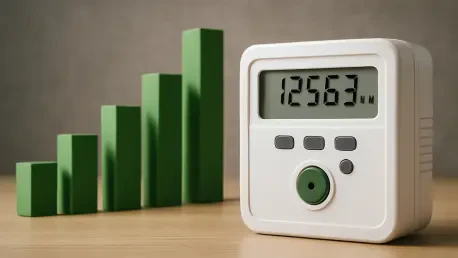The Asia-Pacific region is undergoing a profound energy transformation, and at the heart of this shift lies the burgeoning smart meter market, poised to redefine how utilities manage electricity, gas, and water across diverse nations. These innovative devices, enabling seamless two-way communication between providers and consumers, deliver real-time data to optimize consumption, improve billing accuracy, and enhance grid reliability. With rapid urbanization and soaring energy demands placing unprecedented pressure on aging infrastructure, smart meters are emerging as a vital solution for sustainable utility management. This analysis delves into the market’s growth trajectory from 2020 to 2030, highlighting the key drivers, technological advancements, and regional variations shaping this dynamic sector. As countries like China and India spearhead massive deployments, the region is setting the stage for a digital energy future. This overview aims to illuminate the opportunities and challenges that lie ahead in this critical journey toward efficiency and sustainability.
Catalysts Fueling Market Expansion
The surge in demand for energy efficiency amid rapid urban growth stands as a primary force propelling the smart meter market in Asia-Pacific. As cities expand at an unprecedented pace, particularly in densely populated nations like China and India, the strain on traditional metering systems has become glaringly evident. These outdated setups often fail to address the complexities of modern energy consumption, leading to inefficiencies and losses. Smart meters tackle this issue head-on by providing utilities with granular data to fine-tune distribution networks and minimize waste. This capability is especially crucial in megacities where energy usage spikes daily, pushing infrastructure to its limits. By enabling better demand-side management, smart meters help ensure a stable supply while supporting environmental goals through reduced energy wastage, positioning them as indispensable tools for urban energy planning.
Government policies and national initiatives are equally instrumental in driving the adoption of smart metering technologies across the region. In India, the Smart Meter National Programme (SMNP) is a flagship effort aimed at replacing millions of conventional meters with smart alternatives to boost power sector efficiency. Meanwhile, China’s ambitious smart city projects integrate extensive smart meter rollouts to curb energy losses and modernize infrastructure. Southeast Asian countries are also joining the trend, albeit at a slower pace, by transitioning to automated systems to cut operational costs and elevate service quality. These policy-driven efforts reflect a unified regional commitment to leveraging smart meters for long-term energy sustainability. Backed by regulatory frameworks and funding, governments are creating an environment conducive to large-scale implementation, ensuring that smart metering becomes a cornerstone of energy reform.
Technological Progress and User Empowerment
Technological innovation is reshaping the landscape of utility management in Asia-Pacific, with smart meters at the forefront of this revolution. The integration of these devices with Internet of Things (IoT) platforms, cloud-based analytics, and artificial intelligence (AI) is unlocking new possibilities for efficiency and control. Advanced Metering Infrastructure (AMI) stands out as a game-changer, facilitating real-time consumption tracking and automated demand response to enhance grid stability. This not only streamlines operations for utility providers but also sets a new benchmark for customer interaction through precise billing and actionable insights. As these technologies evolve, they foster an ecosystem where data-driven decisions become the norm, paving the way for smarter energy systems that can adapt to fluctuating demands and prevent outages, ultimately benefiting both providers and end-users.
Another transformative trend is the growing popularity of prepaid smart metering, which is gaining significant traction in markets like India and parts of Southeast Asia. This model, similar to prepaid mobile phone plans, allows consumers to pay for energy in advance, offering them greater transparency and control over their expenses. For utilities, it addresses a persistent challenge of revenue collection by minimizing the risk of unpaid bills and bad debt, a widespread issue in many developing economies. This dual advantage is accelerating the adoption of prepaid systems, as they align with consumer preferences for budgetary oversight while ensuring financial stability for providers. As a result, this approach is emerging as a pivotal strategy to balance operational efficiency with customer satisfaction, marking a significant shift in how energy transactions are managed across the region.
Regional Variations and Implementation Hurdles
The adoption of smart meters across Asia-Pacific reveals a tapestry of progress and priorities shaped by each country’s unique economic and technological landscape. China leads the charge with unparalleled scale, driven by robust government support and a focus on smart grid development to reduce energy losses. India follows as a high-growth market, propelled by national programs targeting outdated metering systems to improve power efficiency. Japan and South Korea, known for their technological edge, are integrating smart meters into sophisticated energy frameworks, while Southeast Asian nations prioritize cost savings and service enhancements in their early-stage rollouts. This diversity underscores the varied pace at which the region embraces smart metering, reflecting local needs and resources while collectively moving toward a more connected and efficient energy future.
Despite the promising outlook, significant barriers stand in the way of widespread smart meter implementation. High initial costs for installation and the development of supporting communication infrastructure remain a formidable challenge, particularly in less developed economies where budgets are constrained. Beyond finances, concerns over data privacy and cybersecurity risks are mounting as smart meters become increasingly connected to digital platforms, raising the specter of breaches and misuse of consumer information. Additionally, the lack of consumer awareness and education can hinder acceptance and effective usage. Overcoming these obstacles demands a multifaceted approach, including public-private collaborations, investments in secure systems, and campaigns to build trust and understanding among users, ensuring that the benefits of smart metering are fully realized.
Modernization Efforts and Future Outlook
The broader push toward grid modernization and digital transformation is a defining trend in the Asia-Pacific smart meter market, positioning these devices as integral to building resilient energy systems. Smart grids, supported by smart metering, are becoming a strategic priority in major economies like China, Japan, and India, where national goals for energy efficiency and environmental sustainability intersect with digital agendas. This shift goes beyond mere technological upgrades, addressing critical challenges such as high demand and aging infrastructure through enhanced connectivity and data utilization. As utilities gain better forecasting capabilities and consumers access detailed usage insights, smart meters are cementing their role as a foundation for a more adaptive and sustainable energy landscape, aligning with the region’s long-term vision for resource management.
Looking ahead, the market’s trajectory from now until 2030 points to sustained growth, fueled by continuous innovation and policy support, though challenges like capital expenditure and security must be addressed. Reflecting on past efforts, the groundwork laid through ambitious programs and technological integration had already begun transforming the region’s energy sector by this point. The emphasis on prepaid models and consumer-centric solutions had proven effective in enhancing engagement and revenue stability for utilities. As the journey unfolded, it became clear that overcoming initial hurdles through collaboration and investment was pivotal. Moving forward, stakeholders must focus on scalable solutions, robust cybersecurity frameworks, and consumer education to unlock the full potential of smart metering. By fostering innovation and regional cooperation, Asia-Pacific can continue to lead in setting global standards for smart energy systems, ensuring a resilient and efficient future.









